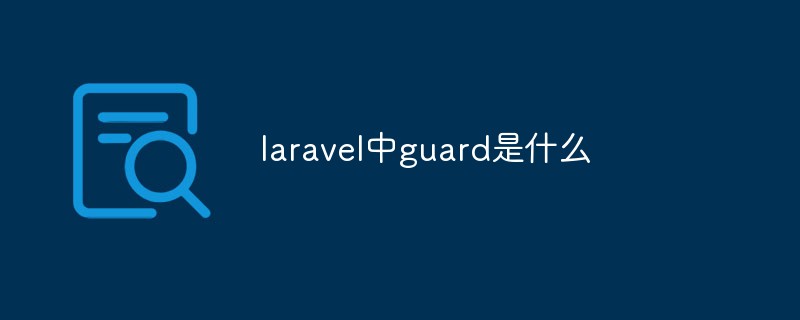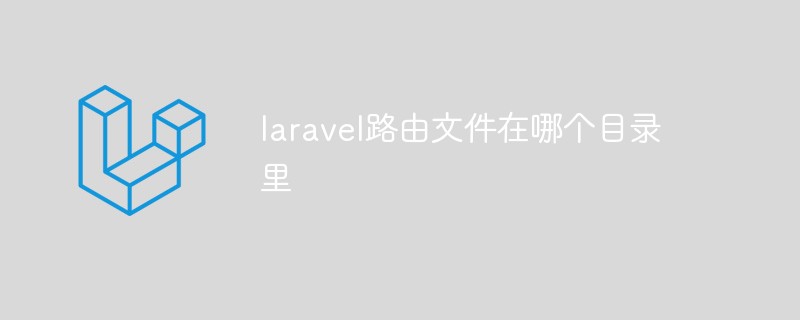Instant interactive applications
In modern web applications, many scenarios require the use of instant messaging, such as the most common payment callbacks and third-party logins. These business scenarios basically need to follow the following process:
● The client triggers related businesses and generates third-party application operations (such as payment)
● The client waits for the server response result (user Complete the operation of the third-party application)
● The third-party application notifies the server of the processing result (payment is completed)
● The server notifies the client of the processing result
● Client basis Give feedback on the result (jump to the payment success page)
In the past, in order to achieve this kind of instant messaging and allow the client to respond correctly to the processing results, the most commonly used technology was polling, because the single-step HTTP protocol Orientation, the client can only actively ask the server for the processing results over and over again. This method has obvious flaws. Not only does it occupy server-side resources, it also cannot obtain server-side processing results in real time.
Now, we can use the WebSocket protocol to handle real-time interactions. It is a two-way protocol that allows the server to actively push information to the client. In this article we will use Laravel's powerful event system to build real-time interactions. You will need the following knowledge:
● Laravel Event
● Redis
● Socket.io
● Node.js
Redis
Before we start, we need to open a redis service and configure and enable it in the Laravel application, because throughout the process, we need to use the subscription and publishing mechanism of redis to Enable instant messaging.
Redis is an open source and efficient key-value storage system. It is usually used as a data structure server to store key-value pairs, and it can support strings, hashes, lists, sets and ordered combinations. To use Redis in Laravel you need to install the predis/predis package file through Composer.
Configuration
The configuration file of Redis in the application is stored in config/database.php. In this file, you can see a file containing Redis service information. redis array:
'redis' => [
'cluster' => false,
'default' => [
'host' => '127.0.0.1',
'port' => 6379,
'database' => 0,
],
]If you modify the port of the redis service, please keep the port in the configuration file consistent.
Laravel Event
Here we need to use Laravel’s powerful event broadcasting capabilities:
Broadcast Event
Many modern applications use Web Sockets to implement real-time interactive user interfaces. When some data changes on the server, a message is delivered to the client for processing via the WebSocket connection.
To help you build this type of application. Laravel makes it easy to broadcast events over a WebSocket connection. Laravel allows you to broadcast events to share the event name to your server-side and client-side JavaScript frameworks.
Configuration
All event broadcast configuration options are stored in the config/broadcasting.php configuration file. Laravel comes with several available drivers such as Pusher, Redis, and Log. We will use Redis as the broadcast driver, which requires the predis/predis class library.
Since the default broadcast driver uses pusher, we need to set BROADCAST_DRIVER=redis in the .env file.
We create a WechatLoginedEvent event class to broadcast after the user scans WeChat login:
<?php
namespace App\Events;
use App\Events\Event;
use Illuminate\Queue\SerializesModels;
use Illuminate\Contracts\Broadcasting\ShouldBroadcast;
class WechatLoginedEvent extends Event implements ShouldBroadcast
{
use SerializesModels;
public $token;
protected $channel;
/**
* Create a new event instance.
*
* @param string $token
* @param string $channel
* @return void
*/
public function __construct($token, $channel)
{
$this->token = $token;
$this->channel = $channel;
}
/**
* Get the channels the event should be broadcast on.
*
* @return array
*/
public function broadcastOn()
{
return [$this->channel];
}
/**
* Get the name the event should be broadcast on.
*
* @return string
*/
public function broadcastAs()
{
return 'wechat.login';
}
}You need to note that the broadcastOn method should return an array, which represents the channel to be broadcast, and broadcastAs returns a string, which represents the event triggered by the broadcast. Laravel's default is to return the full class name of the event class. Here is App\Events\WechatLoginedEvent.
The most important thing is that you need to manually Let this class implement the ShouldBroadcast contract. Laravel has automatically added this namespace when generating events, and this contract only constrains the broadcastOn method.
After the event is completed, the next step is to trigger the event. A simple line of code is enough:
event(new WechatLoginedEvent($token, $channel));
This operation will automatically trigger the execution of the event and broadcast the information. The underlying broadcast operation relies on the subscription and publishing mechanism of redis. RedisBroadcaster will publish the publicly accessible data in the event through the given channel. If you want to have more control over the exposed data, you can add a broadcastWith method to the event, which should return an array:
/**
* Get the data to broadcast.
*
* @return array
*/
public function broadcastWith()
{
return ['user' => $this->user->id];
}Node.js and Socket.io
For the published information, we need a service to connect so that it can subscribe to the redis publication and forward the information using the WebSocket protocol. Here we can borrow Node.js and socket.io. It is very convenient to build this service:
// server.js
var app = require('http').createServer(handler);
var io = require('socket.io')(app);
var Redis = require('ioredis');
var redis = new Redis();
app.listen(6001, function () {
console.log('Server is running!') ;
});
function handler(req, res) {
res.writeHead(200);
res.end('');
}
io.on('connection', function (socket) {
socket.on('message', function (message) {
console.log(message)
})
socket.on('disconnect', function () {
console.log('user disconnect')
})
});
redis.psubscribe('*', function (err, count) {
});
redis.on('pmessage', function (subscrbed, channel, message) {
message = JSON.parse(message);
io.emit(channel + ':' + message.event, message.data);
});Here we use Node.js to introduce the socket.io server and listen to the 6001 port. We borrow the psubscribe command of redis to use wildcards to quickly subscribe in batches, and then when the message is triggered, Messages are forwarded via WebSocket.
Socket.io client
In the web front-end, we need to introduce the Socket.io client to open communication with the server port 6001 and subscribe to channel events:
// client.js
let io = require('socket.io-client')
var socket = io(':6001')
socket.on($channel + ':wechat.login', (data) => {
socket.close()
// save user token and redirect to dashboard
})The entire closed communication loop is now over, and the development process looks like this:
● Build an event in Laravel that supports broadcast notification
● Set the channel and event name that need to be broadcast
● Set the broadcast to use the redis driver
● Provide a continuous service for subscribing to redis publications, and push the published content to the client through the WebSocket protocol
● The client opens the server WebSocket tunnel and subscribes to events, and pushes the specified events to respond.
For more Laravel related technical articles, please visit the Laravel Framework Getting Started Tutorial column to learn!
The above is the detailed content of An implementation method of Laravel instant application. For more information, please follow other related articles on the PHP Chinese website!
 laravel单点登录方法详解Jun 15, 2022 am 11:45 AM
laravel单点登录方法详解Jun 15, 2022 am 11:45 AM本篇文章给大家带来了关于laravel的相关知识,其中主要介绍了关于单点登录的相关问题,单点登录是指在多个应用系统中,用户只需要登录一次就可以访问所有相互信任的应用系统,下面一起来看一下,希望对大家有帮助。
 一起来聊聊Laravel的生命周期Apr 25, 2022 pm 12:04 PM
一起来聊聊Laravel的生命周期Apr 25, 2022 pm 12:04 PM本篇文章给大家带来了关于laravel的相关知识,其中主要介绍了关于Laravel的生命周期相关问题,Laravel 的生命周期从public\index.php开始,从public\index.php结束,希望对大家有帮助。
 laravel中guard是什么Jun 02, 2022 pm 05:54 PM
laravel中guard是什么Jun 02, 2022 pm 05:54 PM在laravel中,guard是一个用于用户认证的插件;guard的作用就是处理认证判断每一个请求,从数据库中读取数据和用户输入的对比,调用是否登录过或者允许通过的,并且Guard能非常灵活的构建一套自己的认证体系。
 laravel中asset()方法怎么用Jun 02, 2022 pm 04:55 PM
laravel中asset()方法怎么用Jun 02, 2022 pm 04:55 PMlaravel中asset()方法的用法:1、用于引入静态文件,语法为“src="{{asset(‘需要引入的文件路径’)}}"”;2、用于给当前请求的scheme前端资源生成一个url,语法为“$url = asset('前端资源')”。
 实例详解laravel使用中间件记录用户请求日志Apr 26, 2022 am 11:53 AM
实例详解laravel使用中间件记录用户请求日志Apr 26, 2022 am 11:53 AM本篇文章给大家带来了关于laravel的相关知识,其中主要介绍了关于使用中间件记录用户请求日志的相关问题,包括了创建中间件、注册中间件、记录用户访问等等内容,下面一起来看一下,希望对大家有帮助。
 laravel中间件基础详解May 18, 2022 am 11:46 AM
laravel中间件基础详解May 18, 2022 am 11:46 AM本篇文章给大家带来了关于laravel的相关知识,其中主要介绍了关于中间件的相关问题,包括了什么是中间件、自定义中间件等等,中间件为过滤进入应用的 HTTP 请求提供了一套便利的机制,下面一起来看一下,希望对大家有帮助。
 laravel路由文件在哪个目录里Apr 28, 2022 pm 01:07 PM
laravel路由文件在哪个目录里Apr 28, 2022 pm 01:07 PMlaravel路由文件在“routes”目录里。Laravel中所有的路由文件定义在routes目录下,它里面的内容会自动被框架加载;该目录下默认有四个路由文件用于给不同的入口使用:web.php、api.php、console.php等。
 laravel的fill方法怎么用Jun 06, 2022 pm 03:33 PM
laravel的fill方法怎么用Jun 06, 2022 pm 03:33 PM在laravel中,fill方法是一个给Eloquent实例赋值属性的方法,该方法可以理解为用于过滤前端传输过来的与模型中对应的多余字段;当调用该方法时,会先去检测当前Model的状态,根据fillable数组的设置,Model会处于不同的状态。


Hot AI Tools

Undresser.AI Undress
AI-powered app for creating realistic nude photos

AI Clothes Remover
Online AI tool for removing clothes from photos.

Undress AI Tool
Undress images for free

Clothoff.io
AI clothes remover

AI Hentai Generator
Generate AI Hentai for free.

Hot Article

Hot Tools

Notepad++7.3.1
Easy-to-use and free code editor

SAP NetWeaver Server Adapter for Eclipse
Integrate Eclipse with SAP NetWeaver application server.

EditPlus Chinese cracked version
Small size, syntax highlighting, does not support code prompt function

PhpStorm Mac version
The latest (2018.2.1) professional PHP integrated development tool

SublimeText3 Chinese version
Chinese version, very easy to use






